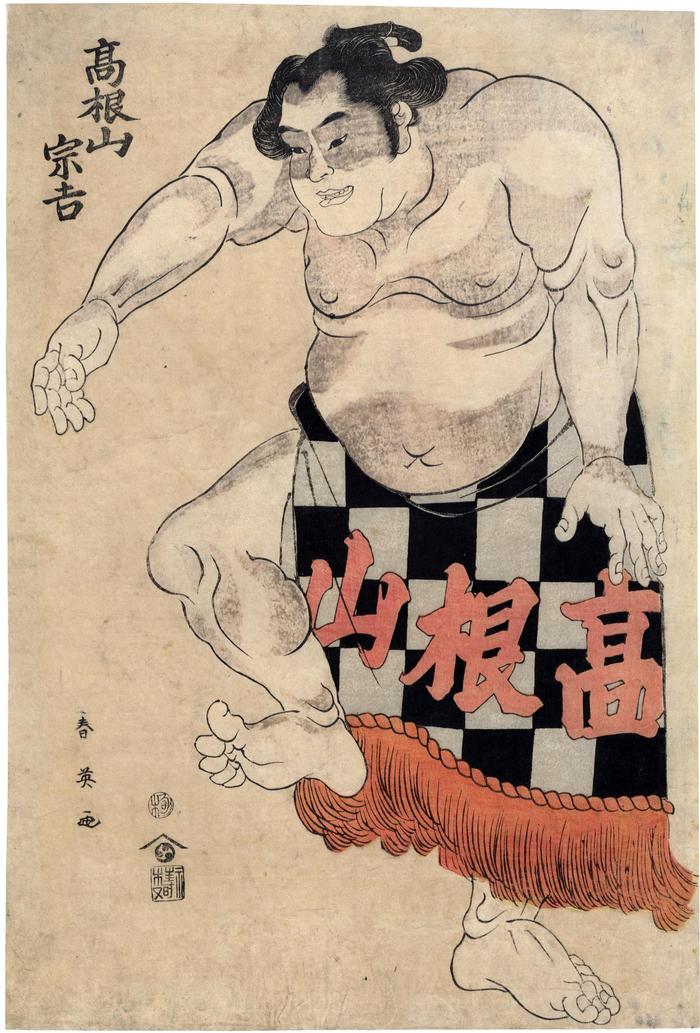Katsukawa Shun'ei (勝川春英) (artist 1762 – 1819)
The sumō wrestler Takaneyama Sōkichi (高根山宗吉)
1790s
10 in x 15 in (Overall dimensions) Japanese color woodblock print
Signed: Shun'ei ga (春英画)
Publisher: Nishimuraya Yohachi
(Marks 391 - seal 23-016)
Censor's seal: kiwame
Honolulu Museum of Art - James Michener gift Shun'ei has placed the name of this wrestler both on the print itself and onto the design of the keshō mawashi or decorative apron.
The first time the keshō mawashi is worn is for the entrance ceremony or dohyō iri (土俵入り or どひょう-いり) when the sekitori (関取 or せきとり), i.e., professional wrestlers, enter the ring. Novice professionals making their first appearance borrow "...a kesho mawashi from a senior stable brother. The next time he will wear one is at his ring-entrance ceremony..." Later his own personal ceremonial apron may be "...a gift from his hometown koenkai (support group)." (Koenkai is 後援会 or こうえんかい.) Source and quotes from: The Essential Guide To Sumo by Dorothea M. Buckingham, pp. 106-108.
These "...garments are made of silk brocade or nishijin ori (西陣織り or にしじんおり). "While they appear to be aprons, they are closer to a woman's obi (sash)." (Ibid.) (JSV)
****
Against a pale yellow ground, the monumental design of a sumō wrestler in his checkered apron performing the ring entering the ceremonial 'stamping'. Single figure sumo prints from this early period are extremely rare.
****
There is another copy of this print in the Tokyo-Edo Museum.
Nishimuraya Yohachi (西村屋与八) (publisher)
sumō (相撲) (genre)
